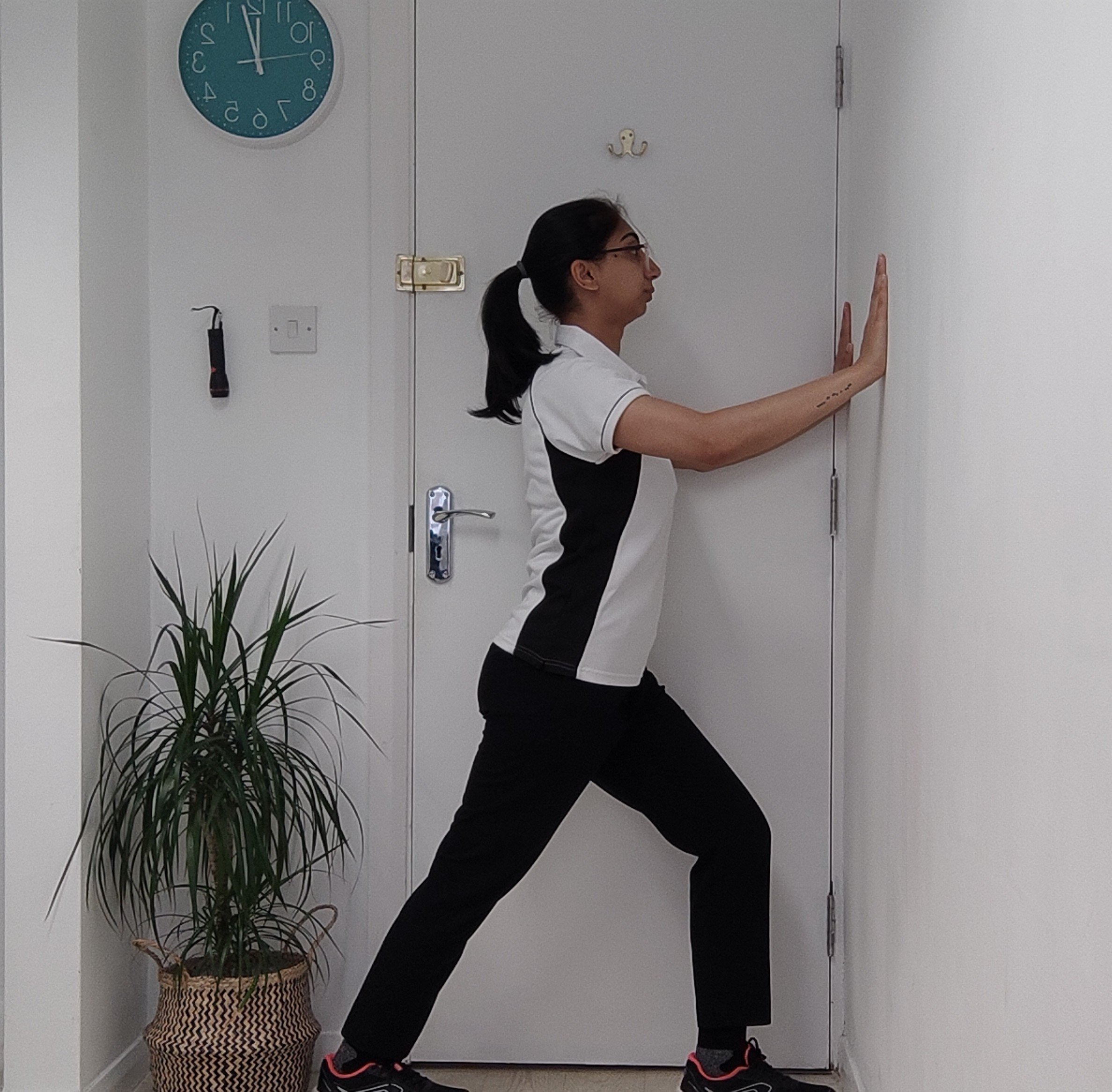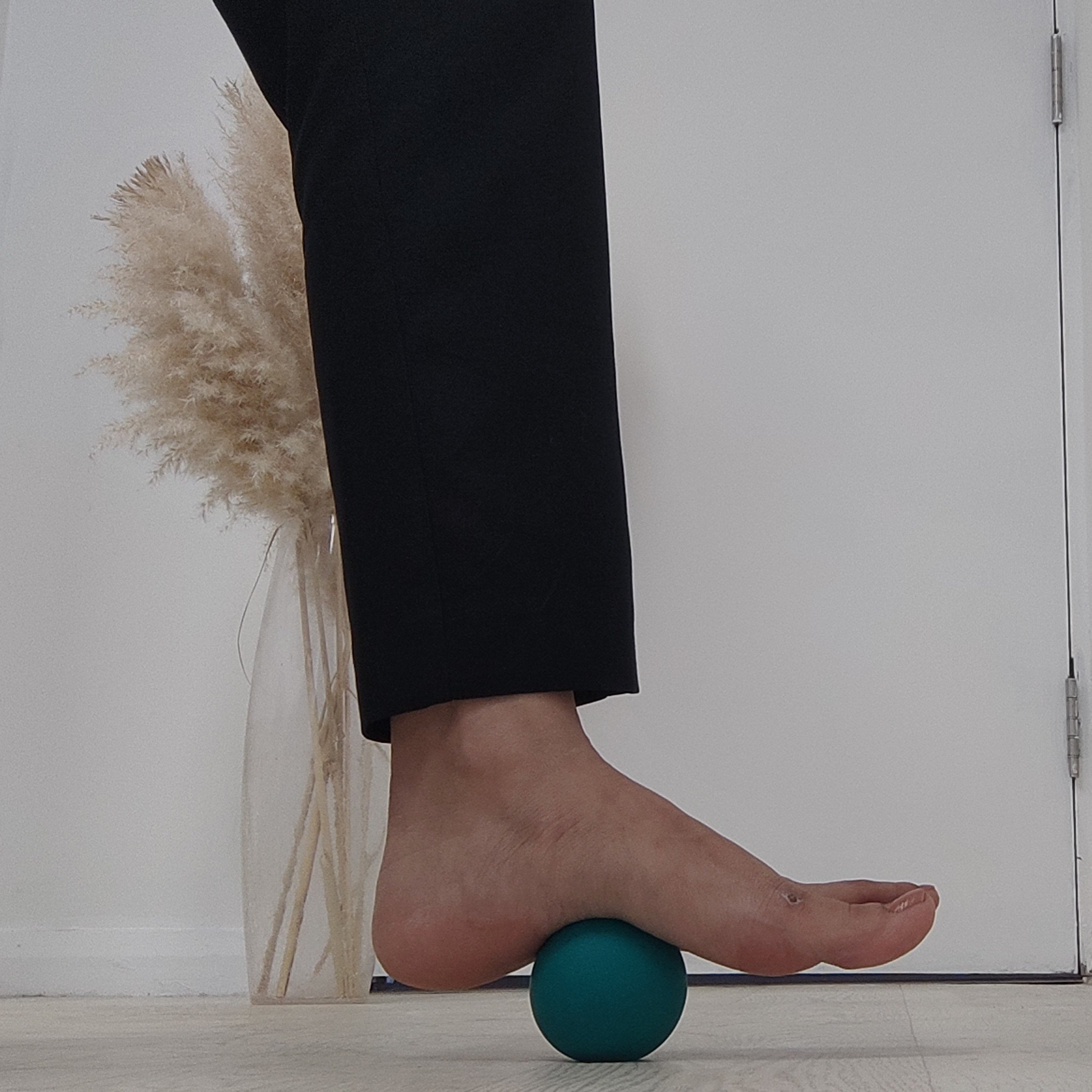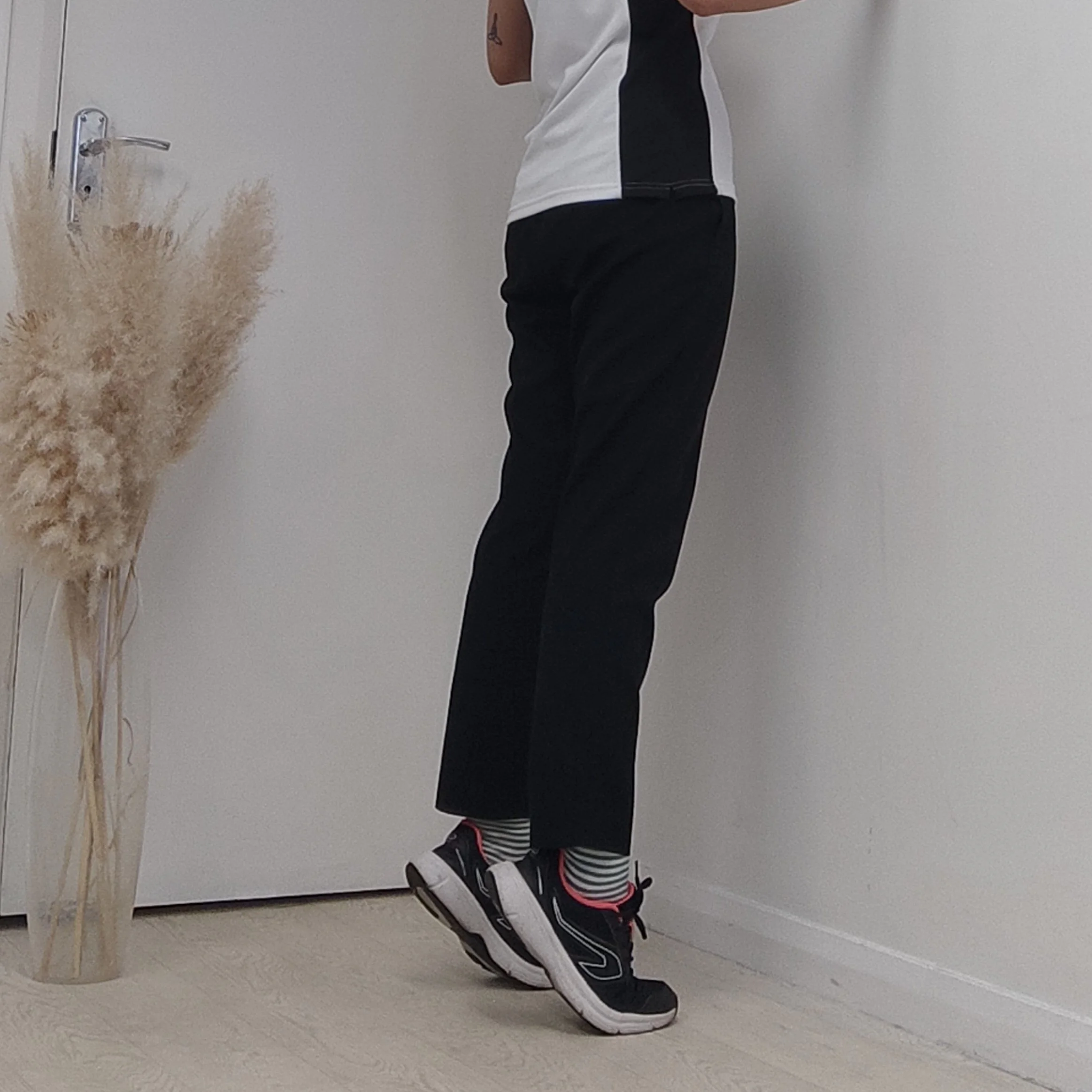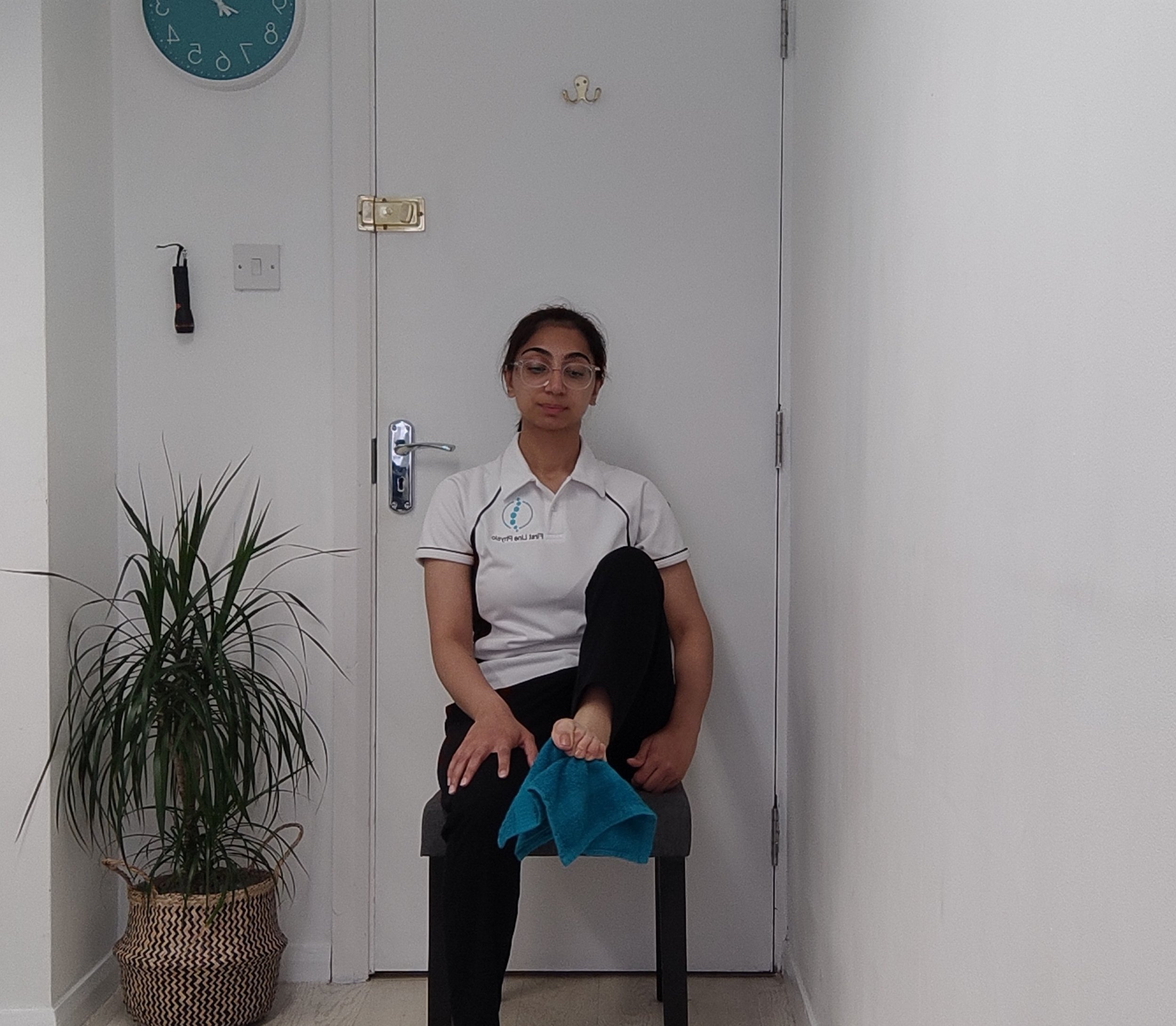Why do I have dropped arches?
Dropped arches could be due to a condition known as posterior tibial tendon dysfunction (PTTD). Here we discuss what this is, what causes it and some physiotherapy exercises you can try which may help to relieve the symptoms.
What are dropped arches?
If you look at the bottom of your feet, you should notice an upward curve on the inside – this is known as your medial arch. Normally, these arches should curve upwards when standing too, but if you notice a downward sagging in the inside edge of your foot, you may have dropped arches.
The medial arch is created by the way the tendons in your feet are attached, specifically a tendon called the posterior tibial tendon. This crucial band of tissue attaches the calf muscle to the bones on the inside of the foot. This serves as one of the major supporting structures of the foot, helping it to function while walking, and is one of the most-worked tendons in the leg.
When the posterior tibial tendon is weakened, injured or worn, changes occur within the tendon which impairs its ability to support the medial arch. This results in a slow flattening of the arch, and is known as posterior tibial tendon dysfunction (PTTD), adult-acquired flat feet or dropped/fallen arches.
Image used with permission from footEducation
Although this condition typically occurs in one foot, some people may develop it in both. PTTD is usually progressive, which means it will keep getting worse, especially if it is not treated early.
Though flat feet can be attributed to arthritis, neuromuscular diseases, and traumatic injuries, a compromised posterior tibial tendon is the most common cause.
What are the symptoms of dropped arches?
The symptoms of PTTD may include pain, swelling, a flattening of the arch and an inward rolling of the ankle. As the condition progresses, the symptoms will change.
In the early stages of PTTD, there is often pain on the inside of the foot and ankle (along the course of the tendon). In addition, the area may be red, warm, and swollen.
However, as the condition progresses, the symptoms tend to change. As the arch begins to flatten, there may still be pain on the inside of the foot and ankle, but it is also possible to experience inward rolling of the ankle and the foot and toes can begin to turn outwards.
As PTTD becomes more advanced, the arch flattens even more and the pain often shifts to the outside of the foot, below the ankle. In addition to this, secondary problems can occur due to the changes in the foot position, such as plantar fasciitis, tendonitis, and in more severe cases, arthritis of the foot and ankle.
Pain with PTTD is often worse with activity, especially high-intensity or high-impact activities, such as running. Some people can have trouble walking or standing for a long time.
What causes dropped arches?
Overuse of the posterior tibial tendon is often the cause of PTTD. In fact, the symptoms usually occur after activities that involve the tendon, such as running, walking, hiking, or climbing stairs.
An acute injury, such as from a fall, can tear the posterior tibial tendon or cause it to become inflamed. The tendon can also tear due to overuse. Once the tendon becomes inflamed or torn, the arch can slowly fall (collapse) over time.
Dropped arches are more common in women and people older than 40 years of age. Additional risk factors include obesity, diabetes, and hypertension. If you have played high-impact sports such as basketball, tennis, or football, this may have contributed to a torn or stretched tendon from repetitive use.
How long does it take to treat dropped arches?
Symptoms will be relieved in most cases with appropriate nonsurgical treatment. Pain may last longer than 3 months even with early treatment. If you have had pain for many months, it is not uncommon for the pain to last another 6 months after treatment starts.
How are dropped arched treated?
Because of the progressive nature of dropped arches, early treatment is advised. If treated early enough, your symptoms may resolve without the need for surgery, and progression can be halted.
In many cases of PTTD, treatment can begin with nonsurgical approaches like:
Shoe modifications - Special inserts or insoles designed to improve arch support can be used.
Immobilisation - Sometimes a boot can be worn to immobilise the foot and allow the tendon to heal, or you may need to completely avoid all weightbearing for a while.
Physiotherapy - Ultrasound therapy and exercises will help rehabilitate the tendon and muscle following immobilisation.
Medications - Nonsteroidal anti-inflammatory drugs (NSAIDs), such as ibuprofen, help reduce the pain and inflammation.
What exercises can I do for dropped arches?
1. Heel stretches
Stand with your hands resting on a wall, chair, or railing at shoulder or eye level.
Keep one leg forward and the other leg extended behind you.
Press both heels firmly into the floor.
Keeping your spine straight, bend your front leg and push yourself into the wall or support, feeling a stretch in your back leg and Achilles tendon.
Hold this position for 30 seconds. Do each side 4 times.
2. Tennis/golf ball rolls
Sit on a chair with a tennis or golf under your right foot.
Maintain a straight spine as you roll the ball under your foot, focusing on the arch.
Do this for 2–3 minutes. Then do the opposite foot.
3. Calf raises
While standing, lift your heels as high as you can.
You can use a chair or wall to help support your balance.
Hold the upper position for 5 seconds, and then lower back down to the floor.
Do 2–3 sets of 15–20 repetitions.
Then hold the upper position and pulse up and down for 30 seconds.
4. Towel curls
Sit in a chair with a towel under your feet.
Root your heels into the floor as you curl your toes to scrunch up the towel.
Press your toes into your foot.
Hold for a few seconds and release.
Make sure to keep the ball of your foot pressed into the floor or towel. Maintain an awareness of the arch of your foot being strengthened.
Do 2–3 sets of 10–15 repetitions.
5. Toe raises
While standing, press your right big toe into the floor and lift up your other four toes.
Then press your four toes into the floor and lift up your big toe.
Do each way 5–10 times, holding each lift for 5 seconds. Then do the exercise on your left foot.
This is absolutely not written to substitute medical advice and it is always important to see a qualified health care professional for a formal diagnosis. If any of the exercises cause pain during or after the exercise, discontinue and consult a physiotherapist.
If you would like to get in touch please visit our contact page.









